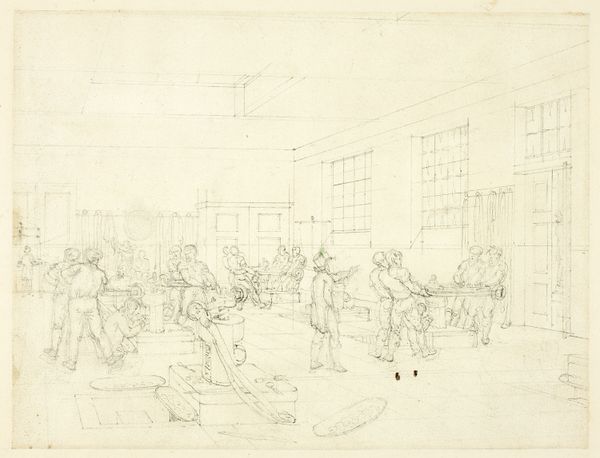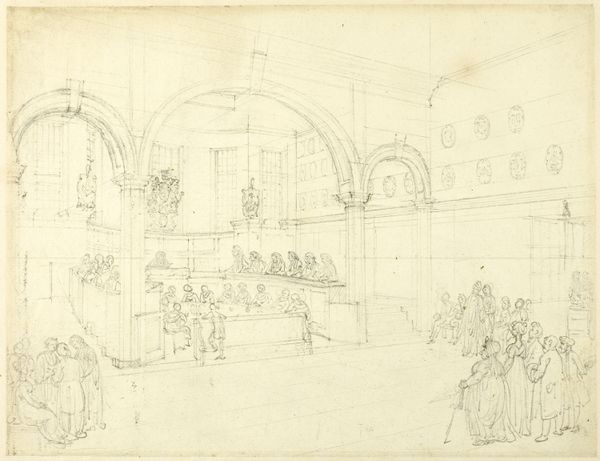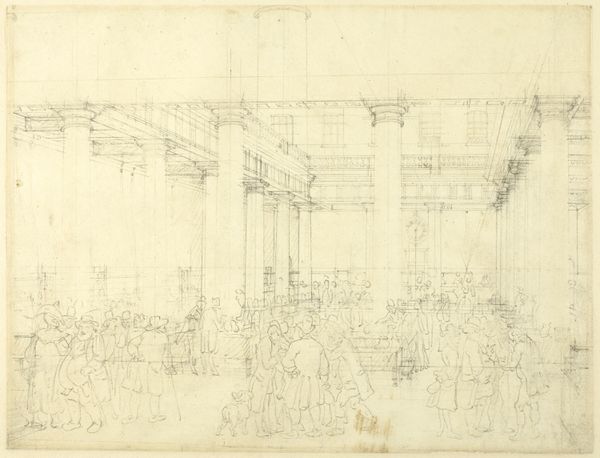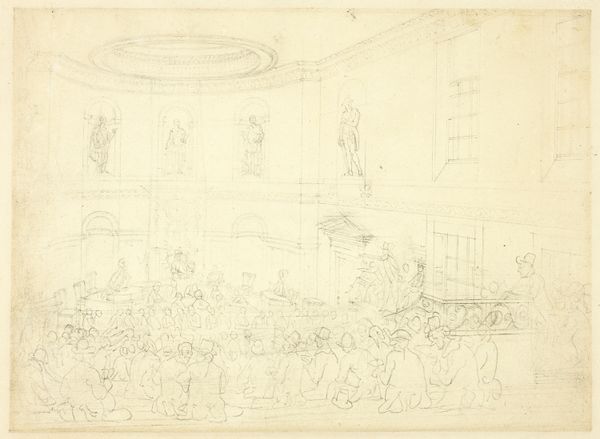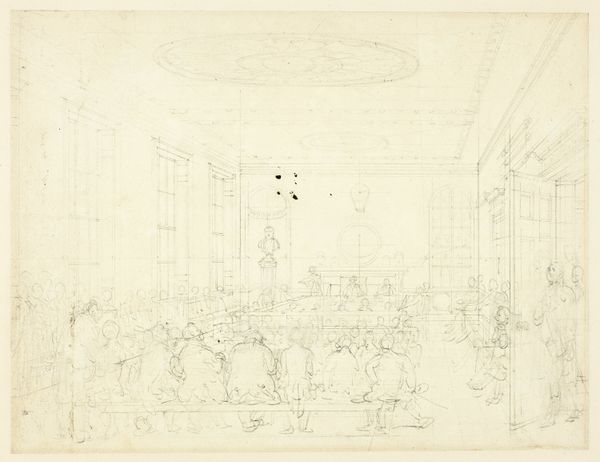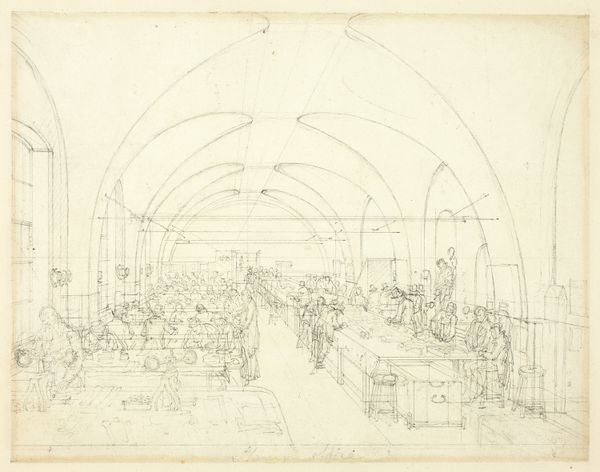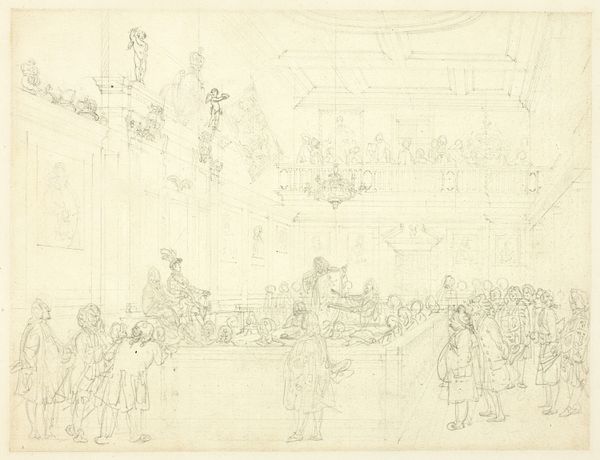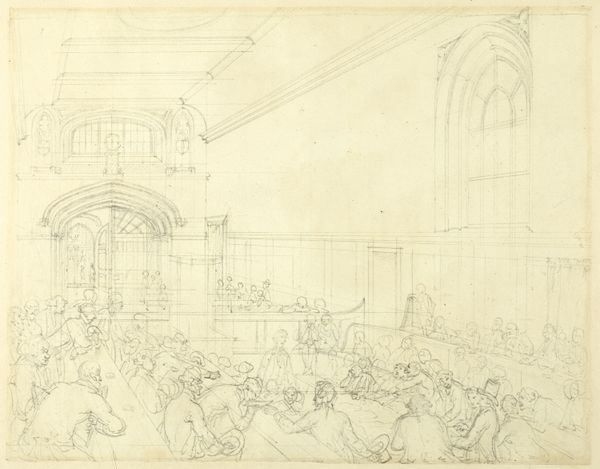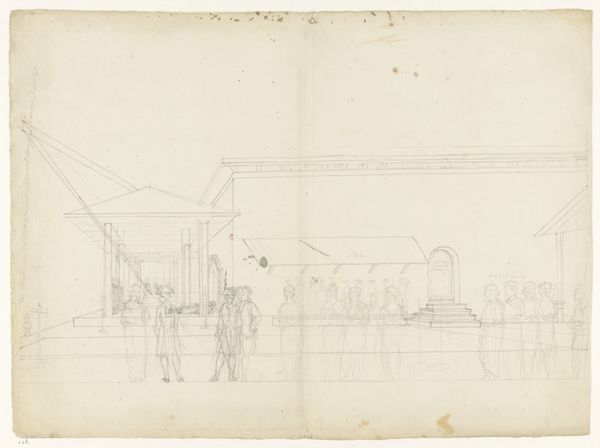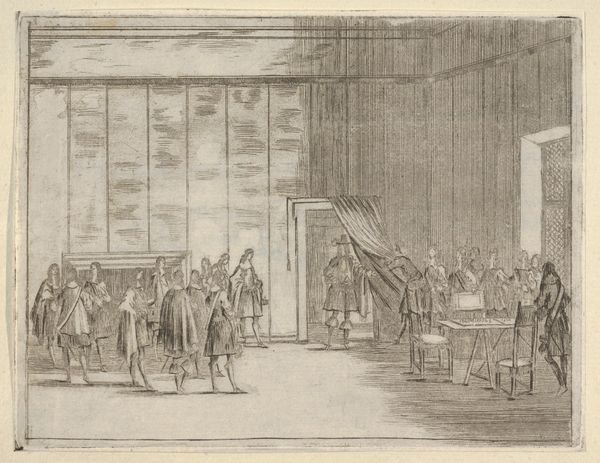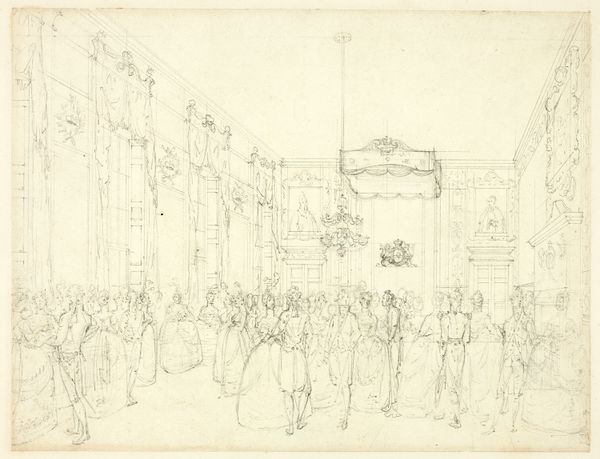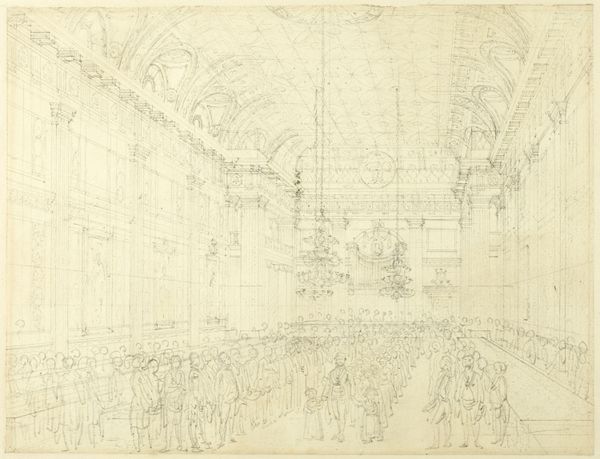
Study for Workhouse, St. James' Parish, from Microcosm of London c. 1809
0:00
0:00
drawing, print, etching, paper, graphite
#
drawing
#
neoclassicism
# print
#
etching
#
etching
#
paper
#
graphite
#
genre-painting
#
history-painting
#
academic-art
Dimensions: 194 × 261 mm
Copyright: Public Domain
Editor: This is Augustus Charles Pugin’s "Study for Workhouse, St. James' Parish, from Microcosm of London," made around 1809, using graphite, etching, and paper. It’s fascinating – it looks like a preliminary sketch, but it’s so detailed! What strikes me most is how the light falls across this crowded interior. What do you see in this piece? Curator: Well, first, it's important to situate Pugin's work within the social fabric of early 19th-century London. Workhouses, often justified by Malthusian economics, were sites of immense social control, effectively imprisoning the poor. Doesn’t the skeletal nature of the drawing itself speak to this reduction of human life? Editor: Absolutely, I see that. So, it's not just a study of light and space, but also a commentary on poverty? Curator: Precisely. Consider how Pugin's style – deeply rooted in neoclassicism and academic art – often masked sharp social critiques. His drawings become interventions. How can we reconcile the apparent objectivity of architectural rendering with the abject conditions depicted? What tensions arise from that contrast? Editor: That’s really powerful. The architectural rendering, with its precision, almost legitimizes the workhouse, yet the scene itself… Curator: …speaks of the dehumanization inherent in the system. Also, the etching lines give texture not only to walls, but to their lives inside that make the poor seem faded. Look how space is given only to the columns. Editor: It's almost like a Panopticon in drawing form, with unseen authorities watching. Curator: Yes. The very composition reinforces the power dynamics at play. It invites us to consider how visual representation can both conceal and reveal injustice. Do you find this relevant in today's social and political landscape? Editor: Definitely. It's a reminder that art can be a powerful tool for exposing the hidden structures of oppression. Thank you! Curator: My pleasure. And it serves as a call for constant questioning of the systems that perpetuate inequality, urging critical engagement with visual culture.
Comments
No comments
Be the first to comment and join the conversation on the ultimate creative platform.
